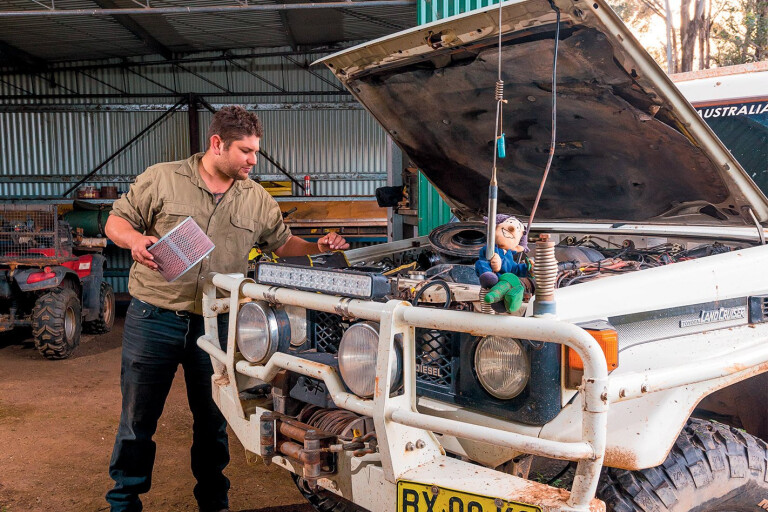
An engine basically needs five ingredients to run correctly – air and fuel to burn, compression to prepare the mixture for ignition, spark to ignite the air/fuel mixture and the correct timing to make sure it all happens at the right time.
So when it comes to diagnosing a problem, the first step is to find out which ingredient is missing.
Checking for fuel
You'll want to ensure fuel is getting from the fuel tank to the engine. So try disconnecting the main fuel line after the fuel pump, either from the carburettor or injector rail inlet, and crank the engine over to see if any fuel comes out. Do not attempt this if you own a commonrail diesel engine as the fuel system operates under mind-blowing pressure – in excess of 20,000psi – and can be extremely dangerous if you’re not familiar with these systems.
The most common causes of failed fuel flow are a blocked fuel filter or a failed fuel pump, but don’t forget the simple things like simply running out of fuel (maybe a leaky fuel tank), or the fuel pump being unable to pick up fuel while you’re on a steep hill.
If you’ve just filled the tank, grab a sample of the fuel in a clear container and check it’s not stale or contaminated with water.
Bright spark
Next, check you’ve got spark. The most common spark-related problems in the bush are usually getting water in the distributor, having loose wiring to the coil or having fouled or worn spark plugs.
To check for spark, you’ll need insulated holding tools to avoid an electrical shock. Remove the spark plugs, and check for a bright blue spark jumping from the end of the hightension lead held close to each spark plug cap terminal as you crank the engine. A weak spark is often yellow.
Air intake
Your engine needs plenty of clean air to run properly, so make sure the air intake system is clean and free from any debris. Pay particular attention to any sticks or twigs that may have clogged up your snorkel, and make sure the air filter isn’t blocked or soaking wet.
The easiest way to check if this is the problem is to remove the air intake tube from the carburettor or throttle body and see if it makes any difference.
3 Common diesel engine dramas

One problem that can stop a diesel in its tracks is getting air in the fuel delivery system. In this case you’ll need to bleed the system for air, but it’s worth trying to figure out how it got in there in the first place. A faulty fuel filter seal, damaged fuel hose or loose injector are the most common suspects.
2. Fuel cut-off solenoid
To turn your diesel engine off, a fuel cut-off solenoid basically cuts the fuel supply to stall the engine. So, if you don’t have fuel getting to the injectors, check that this solenoid has power when the ignition is on and the solenoid is open. Also check that the wiring is not damaged or that the vacuum lines are in good condition if it’s vacuum operated.
3. Slow starts and glow plugs
Glow plugs are used to preheat the combustion chamber before you try starting the engine. If they’re faulty, it makes it very hard for the engine to start when cold. So check the glowplug fuse is okay and there’s power getting to the glow plugs.




COMMENTS